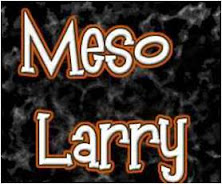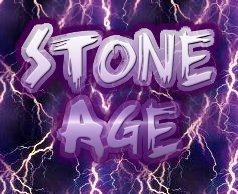Tuesday, January 29, 2013
Ancient India Study Guide 2013
The Story of the Buddha
Thanks to the British Museum, we are able to read a short version of the story of Buddha. In this story, we can see how he started out as a prince but eventually gave up all of that to become Buddha. For your test, you will need to have an overall understanding of the story of Buddha. This would be a great thing to read through.
Monday, January 28, 2013
The Caste System
Here is the Caste system of ancient India. At the top are the Brahmins (priests, teachers). Second are the Kshatryias (warriors, Kings). Third are the Vaishyas (merchants, landowners). Fourth are the Sudras (peasants, servants). Below the caste system are the untouchables. These people are the lowest of low. They would do the most undesirable jobs such as clean the streets, clean the toilets, and handle dead bodies. In ancient India, people were born into the caste system and were never able to change levels. A person could not marry or even be friends with someone of a different caste level. Because of the Caste system, people did not have equal rights and opportunities. Today, the caste system is still used in some parts of India.
Friday, January 25, 2013
Daily Life of Ancient India
Students, we have been studying the world of Ancient India for a couple weeks in class. Let us now move our studying and learning to the virtual world on Water for Sixth Grade. We have studied the Aryans, Mauryans, and Persians. We have studied Hinduism and Buddhism. We learned about the two early cities of India. However, one question we have not looked at yet is: "What was it like to live in ancient India?" For this graded blog post, we will be focusing on and comparing the Indus Valley Civilization and the Aryan civilization in Ancient India. What were schools like? What about homes? What were their clothes like? What did they do for fun? How did they move around? These and many more questions will be answered with the help of this blog post and Mr. Donn's amazing website.
Task 1: Select THREE (3) topics from Aryan Daily Life and THREE (3) topics from Indus Valley Daily Life. Describe the topics in your own words. In other words, just tell me about them!
Task 2: Tell me ONE similarity and ONE difference between the Aryan Daily Life and the Indus Valley Daily life.
View Example Comment Here
Length: each topic can vary, but each description you give me should be at least 2-3 sentences.
DUE: Friday, January 25th at Midnight.
Points: 40 points (5 points for each topic described, 5 points for similarity, and 5 points for difference)
WARNING: It is very easy to catch plagiarism (copy and paste) so do NOT even think about it. All comments are run through my plagiarism checker.
Task 1: Select THREE (3) topics from Aryan Daily Life and THREE (3) topics from Indus Valley Daily Life. Describe the topics in your own words. In other words, just tell me about them!
Task 2: Tell me ONE similarity and ONE difference between the Aryan Daily Life and the Indus Valley Daily life.
View Example Comment Here
Length: each topic can vary, but each description you give me should be at least 2-3 sentences.
DUE: Friday, January 25th at Midnight.
Points: 40 points (5 points for each topic described, 5 points for similarity, and 5 points for difference)
WARNING: It is very easy to catch plagiarism (copy and paste) so do NOT even think about it. All comments are run through my plagiarism checker.
Thursday, January 24, 2013
Ancient Quest: "I Build Houses in Mohenjo-Daro"
Johnny has completed the first half of his ancient quest. He discovered fire, invented farming, mummified a pharaoh and traveled the Silk Road. Now, as he enters the second half of his quest, he will face frustration as the task in India remains hidden from him. As he struggles to find his task, his living arrangements make things almost unbearable. Can Johnny survive his frustration and complete his task? He is about to try.
Read: Chapter 6: "I Build Houses in Mohenjo-Daro"
Labels:
ancient quest,
ancient world,
assignment,
India,
Johnny Rawten,
writings
Tuesday, January 15, 2013
Blueman Helps You with the Quiz
Before you take your online quiz, you need to be prepared. To get prepared, you need to read the Aryans and Hinduism articles and answer the questions. You should also read through this Blueman comic because you will get some help from Blueman and Mustache for your quiz. Remember, don't take the quiz until you are ready! Good Luck!
Monday, January 14, 2013
Ancient India Today
Our ancient travels have brought us to ancient India. So far, we have traveled to the Stone Age, Mesopotamia, Egypt, and China. Our 5th stop is ancient India, but before we dive into the ancient time period of India, we are going to spend some time getting to know the present day India. It is a land of immense population. It has the second largest population in the world and some predict will over take China in population in the future. India is a country that is lesser known than our two previous units of China and Egypt, so because of that, we are going to learn a little bit about the country before we go ancient world. We are going to use the World Atlas to help us learn about present day India. Using the link, find all the information that is required of you in your India Work Packet.
Friday, January 11, 2013
The Hall of Fame
Ladies and Gentleman, I would like to introduce to you, the first 10 inductees into the Ancient Civilization Hall of Fame. The results are both interesting and enlightening. We are going to look at what made it into the Hall of Fame and also who/what did not make it into the Hall of Fame.
Task #1: Look through the Prezi to discover what/who made it into the Hall of Fame. Write down the Hall of Fame members on the back of your Hall of Fame Book.
Task #2: Look through the results link by clicking HERE. Read through the entire list of the results. After looking at the results, I want you to analyze the results by posting a comment telling me what you find interesting about the results. In other words, ask yourself, "What do I think is interesting about the results?" (things such as: who/what didn't make it, certain things getting more votes than others, things getting no votes, things you don't agree with, members of the hall of fame that you don't agree with, things you feel should be higher in the list, etc.) You need to find something you think is interesting about the results, and blog about it.
Labels:
China,
Egypt,
hall of fame,
in class blogging,
Mesopotamia,
prezi,
Stone age
Thursday, January 10, 2013
Qualifications for Hall of Fame
Today you will be voting for the Ancient Civilization Hall of Fame. There are only 10 slots for the first half of the year. There are over 60 items on the Hall of Fame Ballot. You will only be able to vote for 10 items, so you must make some tough decisions.
You will vote for what you think should be in the Hall of Fame based on these qualifications.
Qualifications:
1. Importance to the ancient civilization it is from
2. Impact on our world today
3. Something that is in more than one ancient world we've learned about
4. How much time we spent studying it
5. Whether it is needed or not by that ancient world
You will vote for what you think should be in the Hall of Fame based on these qualifications.
Qualifications:
1. Importance to the ancient civilization it is from
2. Impact on our world today
3. Something that is in more than one ancient world we've learned about
4. How much time we spent studying it
5. Whether it is needed or not by that ancient world
Labels:
China,
Egypt,
hall of fame,
Mesopotamia,
Stone age,
voting
Wednesday, January 9, 2013
Ancient Civilization Hall of Fame
Welcome to the Ancient Civilization Hall of Fame. The ancient civilization Hall of Fame is designed to emphasize those ancient civilization items that are the most important and most influential items in the ancient world. It is our job to think, collaborate, and decide what should be in the Hall of Fame. We are at the midway point of the school year. We have studied four ancient worlds. Before we move on to the second half, we are going to figure out who/what should be in the Hall of Fame from the first half of the year. There are only 20 spots in the Hall of Fame, so at this point, we are going to decide the first 10 items to be enshrined. In the four ancient worlds we've studied, we have covered many, many important and influential items. The problem, though, is that not everything can get in. Just like in sports, only the BEST players make it into the Hall of Fame. We have some tough work and some tough decisions ahead. I have posted the "Showcase" to help us remember and reflect on what we have learned about so far. This will perhaps help remind us and help us make some decisions.
Finally, what do you think should be in the Hall of Fame? Post a comment to get us thinking about what should get selected. This is your chance to persuade "voters" to vote for the ones you think should be in the Hall of Fame, so tell me WHY it should be in.
Post your comment by FRIDAY MORNING!
Finally, what do you think should be in the Hall of Fame? Post a comment to get us thinking about what should get selected. This is your chance to persuade "voters" to vote for the ones you think should be in the Hall of Fame, so tell me WHY it should be in.
Post your comment by FRIDAY MORNING!
Labels:
ancient world,
CCSS,
China,
Egypt,
hall of fame,
Mesopotamia,
midway,
Stone age
Tuesday, January 8, 2013
Friday, January 4, 2013
New Look for the New Year
Every so often, I like to revamp the look of Water for Sixth Grade. This seemingly insignificant move can actually represent something important and applicable to your own life. Do you ever look in the mirror and decide it's time to make a change? This change could be a physical one: lose weight, get in shape, dress differently, better hygiene, or get a hair cut. This change could also be a mental/emotional one: be more respectful, be more appreciative, say "thank you" more, say "I love you" more, help out around the house, get your homework done, do chores without being asked, have a better attitude about school, or think about others instead of yourself. Sometimes, when things are going along smoothly, we lose track of the big picture in life and get too focused on ourselves and our own world. We are here to make a difference and to help people. Are you doing that? If not, perhaps you need to stop and make a change. Don't be intimidated by the pressure to "make a difference" in the world. A difference doesn't have to be some big monumental thing. It could be something small like helping out around the house, giving a compliment, or giving a hug. Just think about it and be aware of the world and your place in it.
Subscribe to:
Posts (Atom)




































